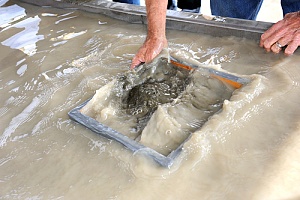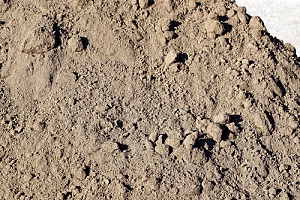 Fill dirt is an essential part of nearly any home construction project. Without it, you may find yourself facing unevenly graded ground or shaky foundations, leading to issues that may cost even more to fix in the future. When selecting fill dirt for your project, you have two main options: screened or unscreened. While either kind may be useable for certain projects, others may require the use of screened fill dirt, which has unique characteristics that can significantly improve a project. In this article, learn more about screened fill dirt and its benefits.
Fill dirt is an essential part of nearly any home construction project. Without it, you may find yourself facing unevenly graded ground or shaky foundations, leading to issues that may cost even more to fix in the future. When selecting fill dirt for your project, you have two main options: screened or unscreened. While either kind may be useable for certain projects, others may require the use of screened fill dirt, which has unique characteristics that can significantly improve a project. In this article, learn more about screened fill dirt and its benefits.
What is Fill Dirt?
Fill dirt is found beneath the top layer of soil and does not contain organic matter, such as sticks or leaves. Instead, it is made solely of rocks, clay, and sand. This makes it more stable than topsoil, which may settle over time as the organic matter within it decomposes. The resulting shifting of topsoil can even create uneven foundations or allow water to enter and further destabilize the area. For these reasons, contractors use fill dirt to fill in holes and change the elevation of an area, among other uses, as opposed to any old topsoil. Fill dirt is also an essential part of many common construction projects, such as filling in a pool.
What is Screened Fill Dirt?
Screened fill dirt goes a step further, removing rocks, gravel, and other debris larger than three-quarters of an inch in diameter. Removing these larger fragments can make it easier to maneuver the dirt and transport it to and from various locations. Screened fill dirt also has fewer clods of clay, giving it a finer, more uniform consistency. During the screening process, the dirt is moved through mesh screens, sifted, and evaluated to ensure the proper consistency. Larger particles might even be removed by hand. The extra effort involved in creating screened fill dirt makes it more expensive than unscreened, though the higher price may be worth paying for the right project.
Benefits of Screened Fill Dirt
 There are several benefits to screened fill dirt that might make it the right choice for your home construction project. The lack of large particles in the dirt decreases the amount of space around which water can enter, preventing settling and creating a stronger foundation for your project. With screened fill dirt, you can be more certain that the foundation of your gazebo, living space, or other installation will be secure. While standard fill dirt can still be used to create a strong foundation, screened fill dirt’s lack of large rocks may be ideal for particularly sensitive projects.
There are several benefits to screened fill dirt that might make it the right choice for your home construction project. The lack of large particles in the dirt decreases the amount of space around which water can enter, preventing settling and creating a stronger foundation for your project. With screened fill dirt, you can be more certain that the foundation of your gazebo, living space, or other installation will be secure. While standard fill dirt can still be used to create a strong foundation, screened fill dirt’s lack of large rocks may be ideal for particularly sensitive projects.
Screened fill dirt is also helpful when your project requires additional precision. Without large rocks around which to maneuver, you can purchase the exact amount of fill dirt needed for your project. You can also use it to grade land more precisely, making it beneficial for areas in which you need to slope water away from a foundation or create a platform of a precise height. This can give contractors added peace of mind when dealing with projects that may otherwise fail if the wrong amount of dirt is used or the dimensions are incorrect.
Finally, screened fill dirt is often cleaned of chemicals and other contaminants during the screening process. This can make it a better choice for homes with pets and small children. Cleaner dirt can also be beneficial in areas with sensitive environments, such as sources of freshwater or endangered species. When it rains, the runoff will not present any major hazards to these groups thanks to the dirt’s purity. With concerns about environmental pollution at an all time high, using cleaner fill dirt is a small way to ensure that your area remains as healthy as possible.
Minor Considerations
Screened fill dirt is generally easy to work with and does not present any major difficulties for homeowners. However, you should be aware that it can cost significantly more than unscreened fill dirt. Carefully consider whether screened fill dirt is truly necessary to your project before you begin to help avoid going over your budget. If you can use regular fill dirt, you may want to do so if the rest of your project will be costly.
In addition to the expense of screened fill dirt, consider whether the consistency of the dirt will be suitable. While screened fill dirt should be sufficient for most home construction projects, you may prefer to use regular fill dirt so that you can complete the project more quickly, as the larger particles will take up more space. These rocks can be more difficult to move, though you may find yourself moving fewer loads of dirt thanks to their size as well.
Purchasing Screened Fill Dirt
 Contact Dirt Connections for more information about screened fill dirt or to schedule a fill dirt delivery. Dirt Connections provides free fill dirt deliveries for residential and commercial construction, making it easy for you to get your project started on time and finished within your budget. The firm’s experienced contractors can help you select the right type and amount of fill dirt, then inspect your site for safety before arranging a delivery at a time convenient for you.
Contact Dirt Connections for more information about screened fill dirt or to schedule a fill dirt delivery. Dirt Connections provides free fill dirt deliveries for residential and commercial construction, making it easy for you to get your project started on time and finished within your budget. The firm’s experienced contractors can help you select the right type and amount of fill dirt, then inspect your site for safety before arranging a delivery at a time convenient for you.
Dirt Connections delivers dirt in nearly any quantity and can support projects of any size, from small residential pool fillings to large foundations for commercial buildings. After your project has been completed, the company will remove any excess dirt to ensure that you will be able to enjoy your new space right away. Dirt Connections provides a range of other services, such as construction plans and asphalt paving, making it an ideal source for all your construction needs.









































